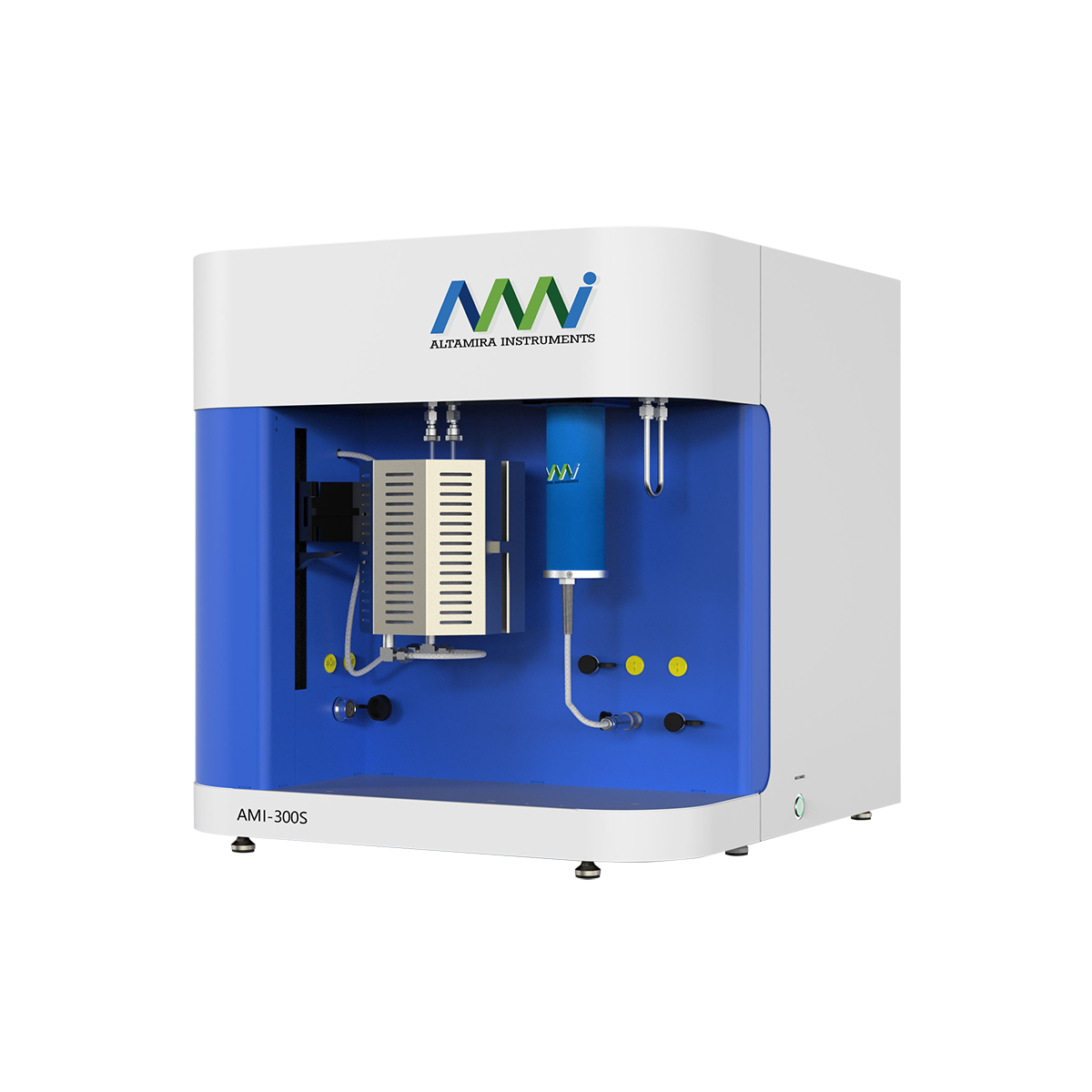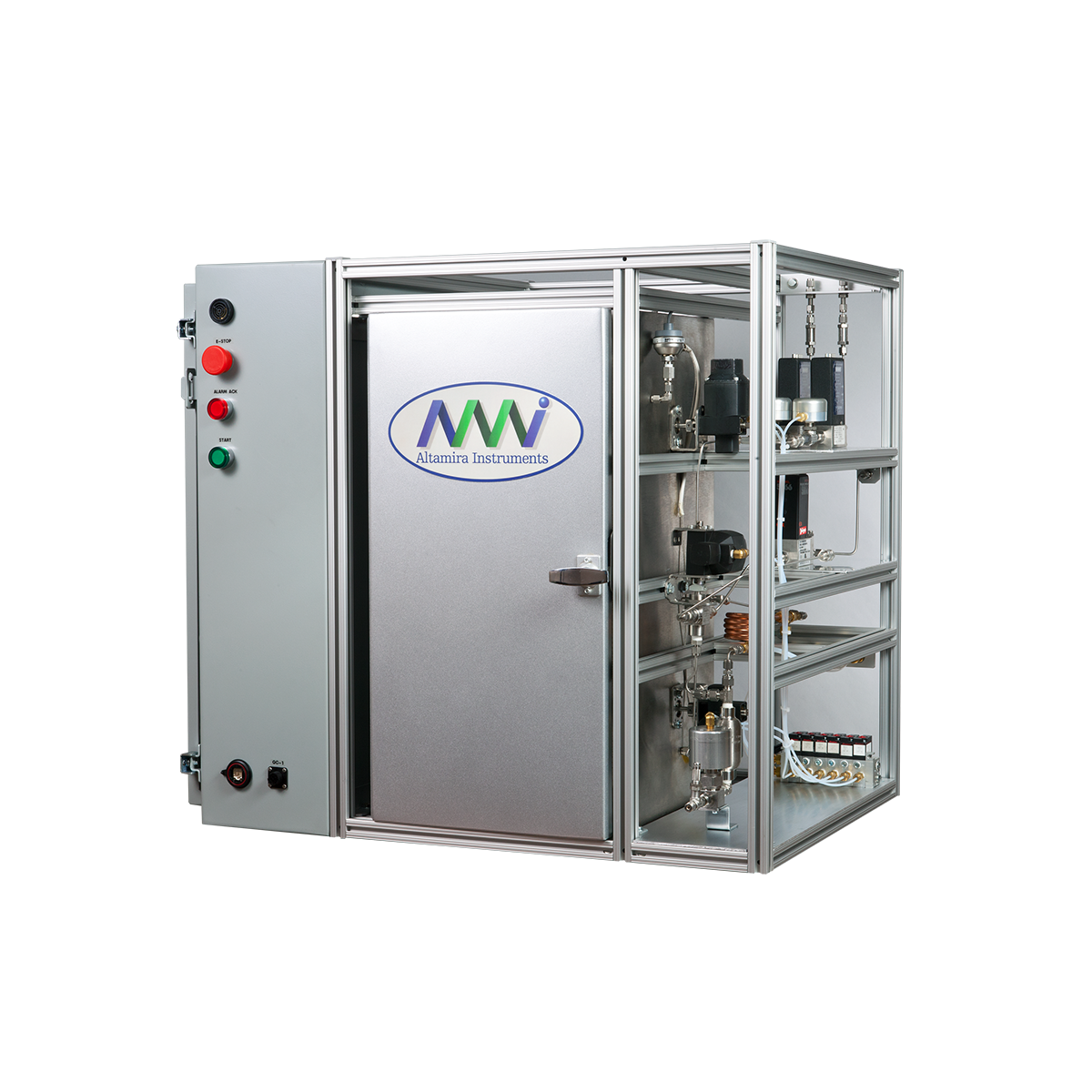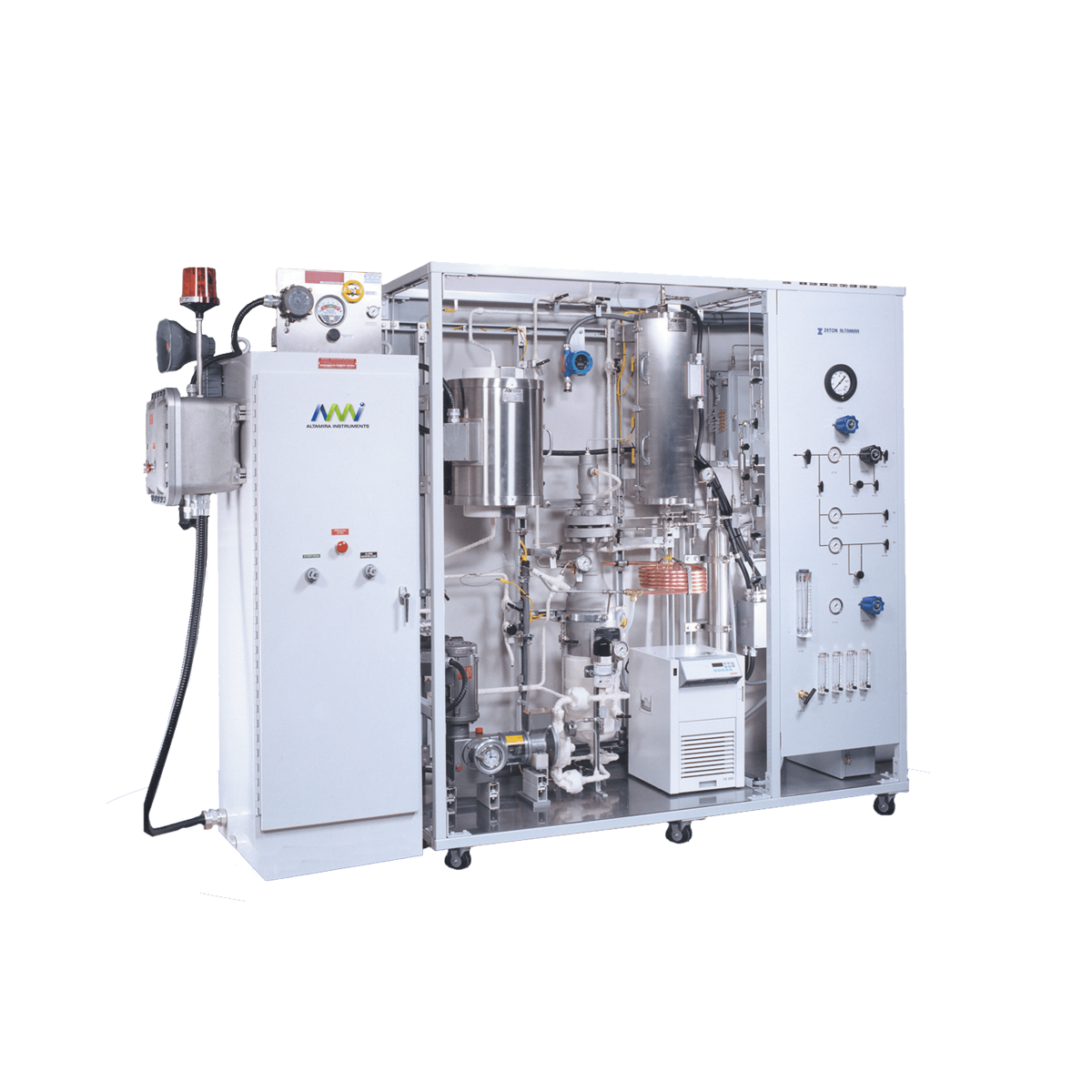TPD experimental results are presented as a plot of detector signal intensity (which can be calibrated to give its relationship to the amount of gas desorbing) versus sample temperature, as shown below:
A TPD experiment can provide information about the number of surface sites exposed and available for chemisorption of a mole- cule of interest. The amount of adsorbed molecules is found simply by integrating the area under the desorption curve. For supported metal catalysts, this chemisorption uptake may be used to calculate an average metal crystallite size.
Why is it important to have information about the number of chemisorbing sites or the size of metal crystallites on a given catalyst? This information provides a basis for comparing the performance of different catalysts. Different catalyst preparations may vary significantly in characteristics such as composition, density of the material or metal weight loading. The chemisorption characteristics of a catalyst may be more closely related to the catalyst's chemical activity than are these other physical characteristics. Knowledge about sites for chemisorption may be used to develop catalytic rate expressions based on the number of adsorption sites rather than the gross catalyst weight or volume. Catalyst activity given on a per site basis makes comparison of the true efficiency of different catalysts more meaningful.
In addition to providing a quantitative measurement of gas uptake by a catalyst surface, TPD experimental results also contain information about kinetic parameters of the adsorption- desorption processes on the catalyst surface. These parameters may be obtained from the known quantities of inert gas flow rate, linear heating rate and desorption peak temperatures.
What kind of kinetic information can be extracted from TPD experiments? A number of papers have discussed the equations which describe the desorption of molecules from catalyst surfaces (1-3). These equations give rate constants and activation energies, as well as the order of the desorption process. Comparison of these parameters for a series of catalysts may delineate trends which help to explain observed differences in catalyst performance. Caution must be taken, however, in utilizing this kinetic information because, as described below, heterogeneous catalyst systems often present experimental complications not addressed in kinetic treatments developed for simpler cases.
One important feature of TPD that should be kept in mind is the transient nature of the experiment.Three variables change continuously over the time of the experiment:
The temperature is raised linearly with time.
The surface coverage of the adsorbate changes with time as the desorption process depopulates the surface.
The desorption rate varies with time as the adsorbate coverage and temperature vary, increasing to a maximum and then decreasing.
These variables are plotted qualitatively in the figure below (redrawn from reference 3.) . The implication of this figure is that a TPD experiment is always performed under changing con- ditions which may be far removed from reaction conditions under which the catalyst is likely to be used.Thus, it is quite important to understand how to interpret TPD spectra so that proper relationships between desorption characteristics and activity of a catalyst may be established.
Quantitative treatment of desorption kinetics has been developed for the case of desorption from homogeneous, nonporous surfaces as well as for the more complicated cases which can arise for porous heterogeneous catalysts (3-5). One of the most important of these complications is that species desorbing from porous surfaces may be held up as they diffuse through the cata- lyst pores by re-adsorbing on sites along the molecule's pathway in the pore.
Desorption from homogeneous, flat samples such as single crystals of metals results in "flash desorption" in which there is very little holdup between the surface and the detector.
Desorption from porous samples, however, can be followed by slow diffusion through pores and even re-adsorption onto other surface sites.This wandering path of the desorbing molecules causes them to arrive at the detector much later, as shown in the figure below:
Do experimental variables have an effect on the resulting TPD spectra for catalyst systems in which this re-adsorption phenomenon is important?
Heating rate. Changing the linear temperature ramp rate for desorption causes the peak temperature to change. Re-adsorption adds a time increment of treads to the normal time it takes for a desorbing molecule to reach the detector. For example, consider a sample which adds a time increment of 180 seconds due to re-adsorption after the initial desorption of a molecule at 100"C. Molecules arriving at the detector are marked at erroneous temperatures as follows:
ramp rate, °C/min detected TDES (true TDES=lOO°C)
5 115
10 130
20 160
30 190
40 220
TPD spectra for these experiments at different ramp rates would appear as below:
Gas flow rate. The flow rate of inert gas over the catalyst surface during TPD also can have an effect on TPD curves. Higher flow rates carry desorbed molecules to the detector more quickly and hence minimize the time lag between the actual desorption temperature and the detected desorption temperature. For example, suppose that the experiment with the catalyst sample described above was carried out with an inert gas flow rate of 25 cc/min in a tubular sample cell with 10 cc volume between the catalyst bed and the detec- tor. Increasing the flow rate to 200 cc/min cuts the total time lag from 180 sec to 161 sec. For a ramp rate of 20 °C per minute, the difference between the true and detected desorption temperatures decreases from 160 to 153°C.
Can we compensate for the effects of re-adsorption by changing the experimental TPD conditions? The above examples show that decreasing the ramp rate and increasing the inert gas flow rate both help to close the gap between true and detected desorption temperatures.
Increasing the flow rate can certainly minimize the lag time between the end of the sample bed and the detector, but it has little effect on the residence time of desorbing mole- cules within the catalyst bed itself. Internal diffusion rates in catalyst micropores are not affected by changes in the flow rate of gas outside the pore. In addition, the time lag is due not only to diffusion of the desorbing gas but also due to its re-adsorption on sites within the catalyst pores. The adsorption residence time on catalyst surface sites is not affected by external gas flow rate.
Decreasing the temperature ramp rate can lessen the tempera- ture lag between true and detected desorption temperature, but it can also change features of the desorption curves. A desorption trace recorded at a slower ramp rate appears to be "flattened". For molecules adsorbed on a heterogeneous surface, a wide spectrum of energies of desorption can exist. At slower ramp rates, desorption is spread out over longer time. Some amount of desorbing gas below the detec- tor's "threshold" is always undetected due to experimental constraints, and the slower desorption occurring at slower ramp rates results in a larger fraction of the gas being "lost" below the threshold detection limit, as shown below.
While changes in the experimental conditions can't obviate all of the problems inherent in studying desorption from heterogeneous surfaces, there is quite a lot to be learned by trying different flow rates and ramp rates for TPD experiments over any given catalyst. Investigating the desorption spectra for a variety of conditions can often help to develop a standard experimental technique to be used for a whole series of catalysts. This method of "fingerprinting" catalysts is a useful means of recording trends in adsorption and desorption to compare with trends in catalyst performance.
The January 1990 issue of Altamira Notes will present a comparison of chemisorption techniques for metal crystallite size determination.
REFERENCES
1. R.J. Cvetanovic and Y. Amenomiya. Advances in Catalysis. 17, 103 (1977).
2. L.D. Schmidt.Catalysis Reviews-Science and Engineering. 9, 115 (1974) .
3. J.A. Schwarz and J.L. Falconer. Catalysis Reviews-Scienc and Engineering. 25, 141 (1983).
4. R.K. Herz, J.B. Kiela and S.P. Marin. Journal of Catalysis. 73. 66 (1982).
5. R.J. Gorte. Journal of Catalysis. 75, 164 (1982).




